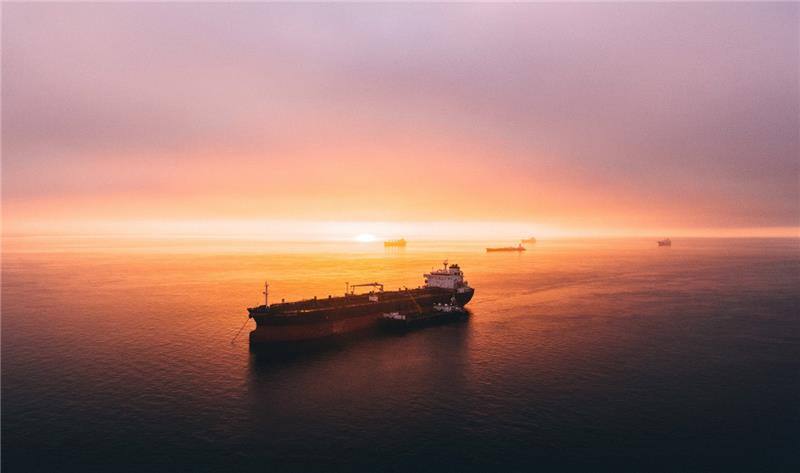In 2024, more than 12,540 days were lost to vessel detentions, revealing just how costly even one disruption can be in today’s high-risk market.
In 2024, RightShip data shows that charterers lost over 12,540 days to vessel detentions — a financial impact estimated at $188 million. But these aren’t just budget line items. Every detained vessel is a break in the chain: disrupting schedules, straining customer relationships, and exposing cracks in operational resilience.
And the signs of trouble are only mounting. RightShip data shows a 28% increase in port inspection activity, a 54% rise in reported deficiencies, and a 34% jump in detentions. While trends fluctuate year to year, the trajectory is clear: regulatory scrutiny is intensifying, and the margin for error is shrinking.
Delay Is a Supply Chain Risk - Not Just an Operational Hiccup
Charterers have always navigated operational complexity. But today’s delays are no longer isolated or incidental — they’re symptoms of systemic pressure.
These disruptions are hitting across the board. Whether you're moving grain, chemicals, oil and gas, or packaged goods, the message is clear — delays aren’t confined to one sector. Every chartering decision is now subject to broader, more volatile forces.
The Ever Given incident showed how one vessel disruption could ripple through entire industries, choking ports, inflating freight rates, and straining contracts. But not all delays make headlines. Smaller-scale disruptions happen every day — quietly triggering demurrage, missed laycans, rejected cargoes, and fractured customer relationships.
These are the symptoms. But the root causes often go undetected until it’s too late. The real drivers often sit upstream: in vessel selection, fragmented workflows, and missed warning signals that could have been caught earlier.
What Delay Means for You?
Charterers across all industries are experiencing this new level of risk — but how it plays out differs by segment.
Chemicals
The chemical supply chain is a delicate web. Cargoes are often shared across tanks or containers, involving multiple stakeholders and receivers. A single delay can cause contractual penalties, production disruptions, or reputational damage — and the operational visibility required to prevent that is often missing.
In fact, a 2022 American Chemistry Council Survey found that 97% of chemical companies had modified operations due to supply chain disruptions. Increasingly, efficiency and risk mitigation — not cost alone — are the KPIs driving chartering decisions. (Forbes, 2023)
Oil and Gas
In energy markets, timing is everything. From crude to LNG, market volatility forces rapid decisions — but reactive chartering often means increased exposure to suboptimal or opaque vessels.
As supply tightens and compliant tonnage becomes harder to secure, the temptation to compromise grows. According to Tankers International, the VLCC fleet is shrinking while sanctions continue to sideline vessels — narrowing options for even the most experienced charterers.
In gas shipping, factors like boil-off rates, terminal compatibility, and safety protocols add further complexity. And with rising ESG scrutiny, relying on minimal vetting or legacy processes is no longer tenable.
Metals & Dry Bulk
A significant portion of the global fleet is managed by smaller operators, with over 3,700 DOC holders globally overseeing fewer than five ships. With fewer assets in play, maintaining high performance and avoiding disruption is critical — which is why risk management tends to be front and centre.
In today’s regulatory landscape, where inspections are increasing and standards are tightening, maintaining robust processes across documentation, maintenance, and compliance becomes essential — no matter the fleet size. For charterers, this means gaining visibility into how risk is managed at the vessel level is more important than ever.
You Can’t Control Global Uncertainty — But You Can Control How You Respond
Geopolitical shifts, regulatory pressure, and climate risk are now baked into the maritime operating environment. But while you can’t control the external landscape, you can take ownership of how your chartering process manages the risks within your control:
- Are vessel assessments thorough and consistent?
- Are risk signals being spotted early enough?
- Is decision-making supported by timely, trusted data?
Many charterers already have strong foundations in place — from in-house vetting teams to external assurance support. But expectations have changed. Timelines are shorter. Data volumes are growing. And disconnected systems create blind spots that introduce risk — often at the worst possible moment.
That’s why RightShip has evolved — building on decades of maritime risk expertise to deliver smarter tools that help charterers act with clarity, consistency, and confidence.
A Clearer Path Through Complexity
The RightShip Due Diligence Hub is a workflow tool that empowers charterers to stay firmly in control of the vessel evaluation and risk management process — from setting internal risk criteria to making the final call on vessel suitability.
It brings structure to complexity, allowing charterers to apply their own standards consistently, eliminate blind spots, and act with greater speed and certainty — all while drawing on RightShip’s trusted data foundation.
In an environment where one delay can ripple across markets, clarity isn't a luxury — it's a competitive edge.
